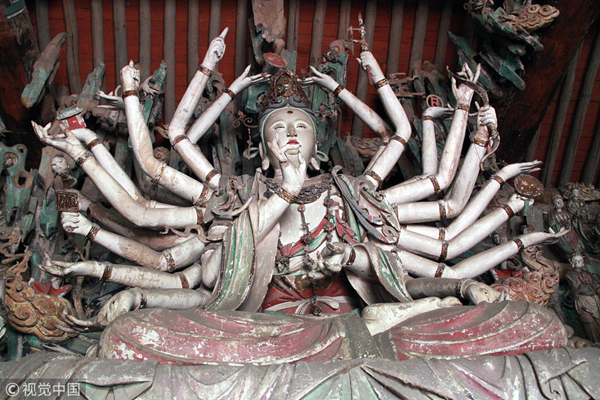Shuanglin Temple

A thousand-armed Bodhisattva sculpture pictured at Shuanglin Temple in Pingyao county [Photo/VCG]
Located around 6 kilometers from the ancient city center, Shuanglin Temple as a part of the renowned World Heritage Site – the Ancient City of Pingyao, has a history dating backing more than 1,400 years, and is famous for its colored clay sculptures.
The temple's 10 halls, which were mostly restored in the Yuan (1271-1368) and Ming (1368-1644) dynasties, have more than 2,000 sculptures (out of which 1,650 are reported to be extant) from 11 dynasties, ranging from the Song (960-1279) to the Qing (1644-1911) dynasties.
The colored clay statues are treasures of the ancient arts. It was uncommon for domestic temples to have secular images. The themes depicted are generally religious in nature and relate to everyday life.
The different types of sculpture are bas-relief (carved deep into a surface to give them the impression of protruding from a background), high relief (protruding far out from a background) and in circular form.
There are also wall sculptures and a few are suspended. The background scenes depict towers, buildings, mountains, rivers, clouds, rocks, grass, flowers and woodlands.
All the sculptures in Shuanglin Temple retain their bright colors despite their long history, showcasing the quintessence of traditional Chinese sculpture art.
Address: No 28 Shuanglinzheng Street, Qiaotou village, Zhongdu town, Pingyao county, Jinzhong city, Shanxi province
Admission fee: 40 yuan/per person
Opening hours: 8:00-19:00



